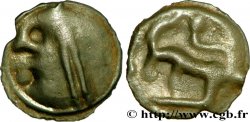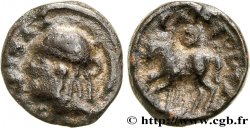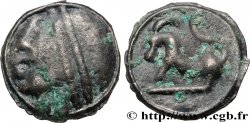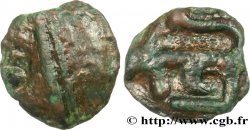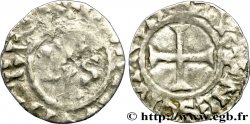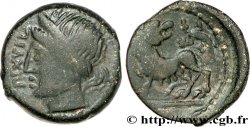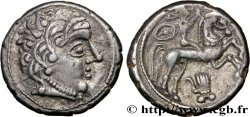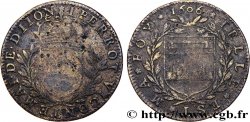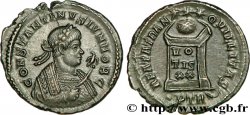bga_293655 - GALLIA BELGICA - SEQUANI (Area of Besançon) Obole à la croix, MASO tête à gauche, type du coin d’Arbois
90.00 €
Количество
Добавить в корзину

Тип Obole à la croix, MASO tête à gauche, type du coin d’Arbois
Дата: c. 80-50 AC.
Металл: silver
Диаметр: 10,5 mm
Ориентация осей монеты: 11 h.
Вес: 0,45 g.
Редкость: R2
Комментарии о состоянии
Flan très court, avec des types de frappe molle et un revers partiellement plat. Surface fortement cristallisée et patine sombre
Ссылки в каталоге: :
Лицевая сторона
Аверс: легенда: ANÉPIGRAPHE.
Аверс: описание: Tête très stylisée à gauche, la chevelure formée par des esses ; grènetis.
Обратная сторона
Реверс: легенда: M/A/.O./S (LE A EN FORME DE DELTA).
Реверс: Описание: Croix cantonnée avec une lettre dans chaque canton ; listel.
Комментарий
Il existe de nombreuses variantes pour ces très rares oboles ! Le droit peut avoir une tête à droite ou à gauche, avec ou sans la croisette dans la chevelure. Le revers peut aussi présenter plusieurs combinaisons de lettres ; MASO ou MAOS.
Selon l’étude qui a été réalisée à l’occasion de la publication du coin d’Arbois, cet exemplaire avec la légende MAOS appartiendrait à la classe I, variante au profil à gauche. Contrairement aux monnaies précédentes, cet exemplaire a un O surmonté de trois globules au troisième canton, il n’est pas seulement encadré de deux globules.
Ce revers n’est pas issu du coin dit “d’Arbois”, mais il est exactement du même type !
L’attribution à l’Est de la France, autour du Jura est probable au vu de récentes découvertes. Il semble qu’il y ait eu des confusions entre les monnaies de ce type, et les imitations de Marseille épigraphes MSAO, émises dans la vallée du Rhône ou plus précisément par les Allobroges (cf. DT. 3173).
En recherchant des références pour cette obole, on se rend compte qu’il s’agit d’un monnayage très rare et curieusement absent de la plupart des publications et des collections publiées.
Ce type semble indirectement copié sur les oboles de Marseille. Il présente aussi certaines similitudes avec les oboles à la croix des Volques Tectosages
.
There are many variations for these very rare obols! The right can have a head on the right or on the left, with or without the cross in the hair. The reverse can also have several combinations of letters; MASO or MAOS.
According to the study which was carried out on the occasion of the publication of the coin d'Arbois, this example with the legend MAOS would belong to class I, variant with the profile on the left. Unlike previous coins, this example has an O surmounted by three globules in the third canton, it is not only framed by two globules.
This reverse does not come from the so-called “Arbois” corner, but it is exactly the same type! The attribution to the East of France, around the Jura is probable in view of recent discoveries. It seems that there was confusion between coins of this type, and the imitations of Marseille epigraphs MSAO, issued in the Rhône valley or more precisely by the Allobroges (cf. D.T.. 3173).
By searching for references for this obol, we realize that it is a very rare coinage and curiously absent from most publications and published collections..
This type seems indirectly copied from the obols of Marseille. It also has certain similarities with the obols on the cross of the Volques Tectosages
Selon l’étude qui a été réalisée à l’occasion de la publication du coin d’Arbois, cet exemplaire avec la légende MAOS appartiendrait à la classe I, variante au profil à gauche. Contrairement aux monnaies précédentes, cet exemplaire a un O surmonté de trois globules au troisième canton, il n’est pas seulement encadré de deux globules.
Ce revers n’est pas issu du coin dit “d’Arbois”, mais il est exactement du même type !
L’attribution à l’Est de la France, autour du Jura est probable au vu de récentes découvertes. Il semble qu’il y ait eu des confusions entre les monnaies de ce type, et les imitations de Marseille épigraphes MSAO, émises dans la vallée du Rhône ou plus précisément par les Allobroges (cf. DT. 3173).
En recherchant des références pour cette obole, on se rend compte qu’il s’agit d’un monnayage très rare et curieusement absent de la plupart des publications et des collections publiées.
Ce type semble indirectement copié sur les oboles de Marseille. Il présente aussi certaines similitudes avec les oboles à la croix des Volques Tectosages
.
There are many variations for these very rare obols! The right can have a head on the right or on the left, with or without the cross in the hair. The reverse can also have several combinations of letters; MASO or MAOS.
According to the study which was carried out on the occasion of the publication of the coin d'Arbois, this example with the legend MAOS would belong to class I, variant with the profile on the left. Unlike previous coins, this example has an O surmounted by three globules in the third canton, it is not only framed by two globules.
This reverse does not come from the so-called “Arbois” corner, but it is exactly the same type! The attribution to the East of France, around the Jura is probable in view of recent discoveries. It seems that there was confusion between coins of this type, and the imitations of Marseille epigraphs MSAO, issued in the Rhône valley or more precisely by the Allobroges (cf. D.T.. 3173).
By searching for references for this obol, we realize that it is a very rare coinage and curiously absent from most publications and published collections..
This type seems indirectly copied from the obols of Marseille. It also has certain similarities with the obols on the cross of the Volques Tectosages







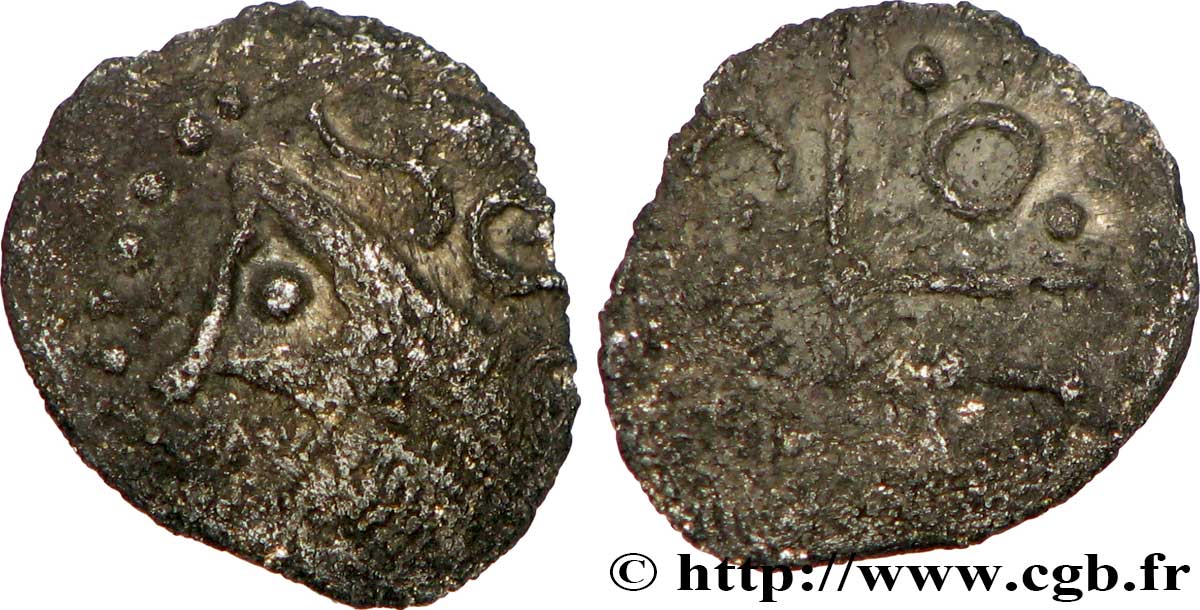
 Cообщить об ошибке
Cообщить об ошибке Распечатать страницу
Распечатать страницу Отправить мой выбор
Отправить мой выбор Задать вопрос
Задать вопрос Consign / sell
Consign / sell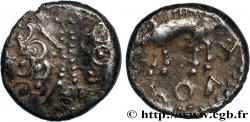
 Информация
Информация